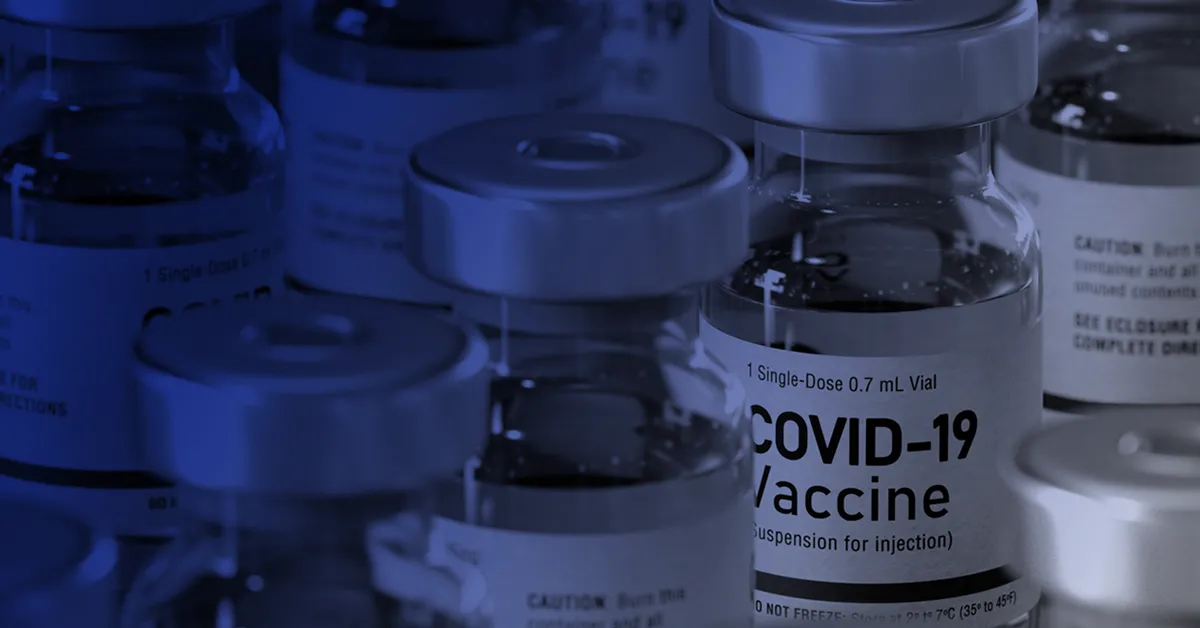
How the FDA Can Improve the Vaccine Approval Process
Health, Data & Analytics, Healthcare Management, Pandemic Response Support, Health Security, DoD Supply ChainThe COVID-19 pandemic put a new spotlight on the U.S. Food and Drug Administration’s (FDA) approval process for preventatives (e.g., vaccines) and treatments (e.g., antivirals). As pharmaceutical companies worked to develop products, many in the private and public sectors got a deeper look into the regulatory review processes that govern the release of these products within the U.S. healthcare system.
Efforts funded by the U.S. and international governments to rapidly identify and license COVID-19 products were ultimately successful, creating a product portfolio that the medical community could implement to slow the spread of the virus. However, there is still more to do to enable productive collaboration between the private and public sectors to bring effective medical countermeasures to market. Below are some lessons learned from the pandemic response that may be useful for the FDA vaccine approval process going forward.
Data Transparency Between Government Regulatory Groups and Product Sponsors Is Critical
One of the defining features of the U.S. government and international efforts was information sharing. It wasn't always perfect, but public- and private-sector stakeholders were incentivized to be very transparent about their product development and data review throughout the process.
"What we saw in the work that Moderna and [the National Institutes of Health] NIH were doing together, for example, was a lot of data sharing on issues like immune response, which is often information companies keep to themselves," explains Dan Casaburi, Senior Consultant in Chemistry at LMI. "But it provided a better understanding of how the vaccine might work at the agency level and created a communication path between NIH and the FDA. Similarly, Pfizer was very transparent about its whole process of submissions to the FDA. It made the review step much more straightforward."
In non-emergency situations, this approach to transparency between public and private stakeholders may help minimize future pandemics. The FDA product licensure process will always require statistically significant data sets provided by pharmaceutical developers to support their product safety, manufacturing consistency, and efficacy. Better transparency on all sides may lead to a more informed and streamlined approach to product licensure, especially in times of need like pandemics, when schedules have to be greatly accelerated to assess the risks against the benefits for the intended use of a product.
Further Streamlining the Collection and Presentation of Datasets Can Improve the Review Process
The FDA is a risk-to-benefit regulatory review body that needs clear, statistically significant data sets to support its eventual licensure of a product’s safety, consistency, and efficacy. To help in reviews, the FDA requires that all product information and data sets be submitted to different modules within an electronic common technical document (eCTD) that is formatted in a way to help FDA reviewers rapidly find the information that is needed. These data sets summarize critical aspects of a product, including the overall safety profile from clinical (and non-clinical as needed) testing, support the overall development and validation of a Sponsor’s manufacturing process, assess product quality attributes (e.g. potency), and evaluate a product’s efficacy for its intended use. When the benefit outweighs the risk in times of stress like a pandemic, the FDA may choose to further streamline the process for gathering one or more of these datasets to support emergency use authorizations and expanded access. However, the eventual licensure of a product will still require all supportive datasets.
If private and public sector stakeholders want to accelerate product development and licensure in the absence of a pandemic, they need to work with the FDA to streamline the process in a way that ensures the benefit still outweighs the risk and all required data sets are still collected and adequately presented to FDA reviewers.
"From the standpoint of an FDA reviewer, they need statistically significant data that can be easily migrated into their modeling framework to be used to ultimately confirm the claims made by the product Sponsor and justify that the benefit outweighs the risk for use of a product in the population," explains Chris Badorrek, Ph.D., Principal Technical Advisor, Clinical Research at LMI.
Badorrek adds that the onus is not just on the private sector to get this right. "It goes back to transparency and alignment between the FDA, the stakeholders, and the product Sponsor on the intended purpose of representative datasets to support product usage," he says. "The FDA continually provides updates to its guidances on what data is needed and how reviewers need to see data presented and formatted. But more outreach is required to align the FDA, stakeholders, Sponsors and the public—especially on how the review process works and how the data is used to support critical decisions regarding the intended use of a product."
Greater collaboration and clearer expectations would streamline the data intake process for the FDA and make the review process as a whole less open to faulty interpretations and misinformation from third parties—something that is especially important when vaccine hesitancy is on the rise.
Technological Improvements Can Also Help
Better data analytics and risk modeling within the FDA could improve interoperability with the private sector and help to speed up the review process. The FDA has recognized this and is working to onboard more technology resources. In a recent Request Information, for example, the agency indicated that it wanted to expand its machine learning capabilities, specifically with an eye toward improved data analysis.
Badorrek notes that this could be an opportunity to keep building on the collaboration and transparency improvements that happened during the previous Ebola and COVID responses.
"The FDA could accelerate the overall risk-to-benefits assessment to further streamline its ability to rapidly gather statistically significant data that presents a clear and concise picture of a product’s intended use, manufacturability and consistency, and overall safety and efficacy. With increased transparency between FDA, stakeholders, and product sponsors, clearer discussions can also be had about adequacy of the data that is being collected and what additional data is needed to help that risk to benefit assessment. Data analysis works both ways—the private sector can submit a lot of data, but the data won’t be helpful if it hits a bottleneck in the overall review process,” Badorrek says. “If those systems improve, they can do more and be more transparent about the process. What you get is better public-private collaboration that will ultimately get more products out to the public without sacrificing safety."
LMI’s regulatory and technical experts support medical product development efforts for multiple federal programs, including identifying regulatory strategies for optimizing resources and capability solutions. We facilitate collaboration between public- and private-sector stakeholders and across federal agencies to gain regulatory approval for new biologics, drugs, and devices that may be used in a public health emergency. We work at the intersection of science, policy, logistics, and analytics to facilitate healthcare innovation, implement federal healthcare priorities, advance health security, and optimize service delivery and program effectiveness.

Health & Civilian
Our subject matter experts and advisors have a broad knowledge base across the spectrum of federal health and civilian agencies to enable excellence in execution that transcends boundaries.


Chris Badorrek, PhD
Program Manager 2Chris has deep expertise in the areas of process development and current goods manufacturing for vaccines and therapeutics; DNA, RNA, and protein chemistry and modeling; bacteriology; retrovirology; chemical, biological, radiological, nuclear, and explosive sensor and device development; and novel materials for detection of chemical analytes at trace (parts per billion and trillion) levels. He is well-versed in applicable guidelines from within the Code of Federal Regulations, Department of Defense technology acquisition and maturation, U.S. Food and Drug Administration application, U.S. Pharmacopeia, and the International Council for Harmonization.


